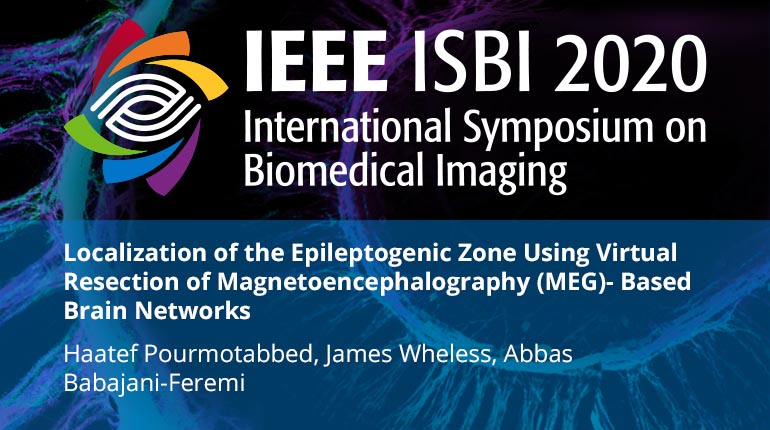Collection:

About two-thirds of patients with drug-resistant epilepsy (DRE) achieve seizure freedom after resection of the epileptogenic zone (EZ). Functional connectivity (FC) analysis may be valuable for increasing the success rate. A spectral graph measure based on virtual resection called control centrality (CoC) has been used with ictal electrocorticography to predict postoperative seizure outcome. Our study investigated whether CoC can be used with resting-state magnetoencephalography (rs-MEG) to localize the EZ. The performance of CoC was compared to that of another spectral measure called eigenvector centrality (EVC). EVC had greater sensitivity while CoC had greater specificity in localizing the EZ. This suggests that these measures are complementary and may be valuable for pre-surgical evaluations.
- IEEE MemberUS $11.00
- Society MemberUS $0.00
- IEEE Student MemberUS $11.00
- Non-IEEE MemberUS $15.00
Videos in this product
Localization of the Epileptogenic Zone Using Virtual Resection of Magnetoencephalography (MEG)- Based Brain Networks
About two-thirds of patients with drug-resistant epilepsy (DRE) achieve seizure freedom after resection of the epileptogenic zone (EZ). Functional connectivity (FC) analysis may be valuable for increasing the success rate. A spectral graph measure based on virtual resection called control centrality (CoC) has been used with ictal electrocorticography to predict postoperative seizure outcome. Our study investigated whether CoC can be used with resting-state magnetoencephalography (rs-MEG) to localize the EZ. The performance of CoC was compared to that of another spectral measure called eigenvector centrality (EVC). EVC had greater sensitivity while CoC had greater specificity in localizing the EZ. This suggests that these measures are complementary and may be valuable for pre-surgical evaluations.
 Cart
Cart Create Account
Create Account Sign In
Sign In
